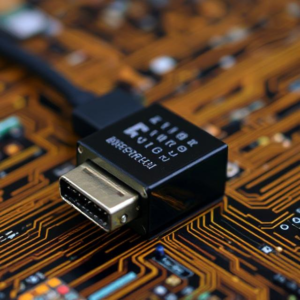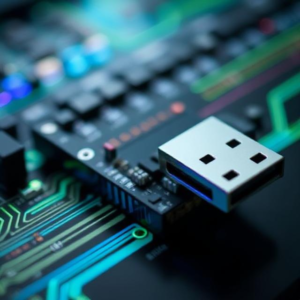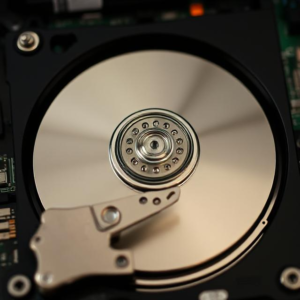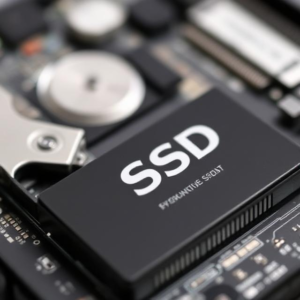High-speed serial protocols are technologies used to transfer data between devices quickly and efficiently, usually one bit at a time over a single wire. These protocols are important because they allow devices like computers, phones, and peripherals to communicate at high speeds. Let’s look at some common high-speed serial protocols in simple terms:

1. PCIe (Peripheral Component Interconnect Express)
- What it is: PCIe is a high-speed communication standard used mainly inside computers to connect components like graphics cards, storage devices (like SSDs), and network cards to the motherboard.
- How it works: PCIe uses lanes (like lanes on a highway) to send data. The more lanes you have, the faster the data transfer. For example, PCIe x16 has 16 lanes and is commonly used for graphics cards because it requires high-speed data transfer.
- Why it’s fast: Each lane can transmit data in both directions at once, allowing PCIe to send large amounts of data very quickly. PCIe 4.0 can transfer data at 16 gigabits per second (Gbps) per lane, and PCIe 5.0 can go up to 32 Gbps per lane.
- Common uses: Connecting graphics cards, storage drives (SSD), network cards, and other high-performance devices inside a computer.
2. USB (Universal Serial Bus)
- What it is: USB is a widely used protocol for connecting external devices like keyboards, mice, printers, and storage devices (USB flash drives or external hard drives) to a computer or smartphone.
- How it works: USB uses a single wire to send data one bit at a time. Over time, different versions of USB have been released, each with faster data transfer speeds.
- USB 2.0: 480 Mbps (megabits per second)
- USB 3.0/3.1: 5 Gbps (gigabits per second)
- USB 4.0: Up to 40 Gbps (same speed as Thunderbolt 3)
- Why it’s fast: USB has improved over the years with better hardware, faster data transfer rates, and the ability to transfer data and power over the same cable.
- Common uses: Connecting peripherals like mice, printers, and external drives, as well as charging devices like phones.
3. Thunderbolt
- What it is: Thunderbolt is a high-speed data transfer protocol developed by Intel. It is often used for high-performance external devices like external hard drives, monitors, and docking stations.
- How it works: Thunderbolt combines data, video, and power into one connection. It uses the same cables as USB-C but can transfer data at much faster speeds.
- Thunderbolt 3: Up to 40 Gbps
- Thunderbolt 4: Also up to 40 Gbps but with added features for better consistency.
- Why it’s fast: Thunderbolt allows for high-speed data transfer, supports high-definition displays, and can charge devices all through one cable.
- Common uses: Connecting high-performance external devices (like 4K monitors, fast external storage), and even daisy-chaining multiple devices.
4. SATA (Serial Advanced Technology Attachment)
- What it is: SATA is a protocol used to connect storage devices like hard drives and solid-state drives (SSDs) to a computer.
- How it works: SATA uses a serial connection to transfer data between the motherboard and storage devices. It’s simpler than older parallel connections and faster than earlier protocols.
- SATA III: Offers speeds of up to 6 Gbps (gigabits per second).
- Why it’s fast: SATA was designed to replace older parallel connections, offering faster speeds and more efficient use of cables.
- Common uses: Connecting hard drives and SSDs to computers.
5. M.2 (Next-Generation Form Factor)
- What it is: M.2 is a physical form factor used for connecting storage devices like SSDs directly to a motherboard. It supports faster data transfer protocols like PCIe.
- How it works: M.2 SSDs use the PCIe protocol to communicate with the computer, offering speeds much faster than traditional SATA SSDs.
- M.2 PCIe: Can offer data speeds of up to 32 Gbps or more, depending on the number of PCIe lanes.
- Why it’s fast: M.2 uses PCIe, allowing for high-speed data transfer. The form factor is also much smaller than traditional hard drives, allowing for compact devices.
- Common uses: Fast internal storage in laptops, desktops, and gaming systems.
6. HDMI (High-Definition Multimedia Interface)
- What it is: HDMI is a protocol used for transferring high-definition video and audio signals from a device (like a computer or gaming console) to a display (like a TV or monitor).
- How it works: HDMI sends high-quality video and audio data through a single cable, with high bandwidth to support things like 4K and 8K video.
- HDMI 2.1: Can transfer data at speeds up to 48 Gbps.
- Why it’s fast: HDMI can handle large amounts of data needed for high-definition video and audio, ensuring smooth streaming and gaming experiences.
- Common uses: Connecting TVs, monitors, projectors, and gaming consoles to devices like laptops, desktops, and Blu-ray players.
7. Ethernet
- What it is: Ethernet is a protocol used for wired networking. It allows devices to connect to local area networks (LANs) or the internet.
- How it works: Ethernet uses a physical cable to transmit data at high speeds. It’s typically used in offices, homes, and data centers to establish reliable, high-speed internet connections.
- Gigabit Ethernet: Offers speeds of up to 1 Gbps.
- 10 Gigabit Ethernet: Can offer speeds of up to 10 Gbps.
- Why it’s fast: Ethernet is designed to provide fast, stable internet connections with low latency, ensuring smooth video streaming, gaming, and file sharing.
- Common uses: Wired internet connections in homes, businesses, and data centers.
Summary of Common High-Speed Serial Protocols:
- PCIe: Used inside computers for fast connections between components like graphics cards and storage.
- USB: Widely used for connecting external devices like keyboards, mice, and storage.
- Thunderbolt: High-speed protocol for connecting external devices with fast data, video, and power support.
- SATA: Used to connect storage devices like hard drives and SSDs to computers.
- M.2: Compact storage connector using high-speed PCIe for fast data transfer.
- HDMI: Transfers high-definition video and audio between devices like TVs and computers.
- Ethernet: Used for high-speed wired internet and network connections.
In short, high-speed serial protocols are the highways of modern computing and communication, enabling devices to transfer data quickly and efficiently. Each protocol is designed for specific uses, whether inside a computer (like PCIe) or for connecting external devices (like USB or HDMI).











